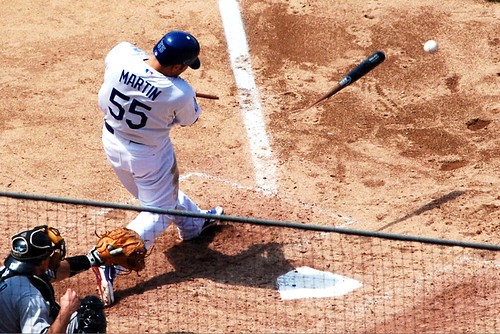
Rate of shattered maple bats down 50 percent.
In 2008, Major League Baseball (MLB) came to the U.S. Forest Service, asking our Forest Products Laboratory to investigate why baseball bats were increasingly shattering into multiple pieces on contact.
The Forest Service team, led by David Kretschmann, dug in, swung for the fences and scored big time!
Kretschmann’s research, which was fully funded by MLB, has led to major improvements in the manufacturing of bats and helped make America’s favorite pastime safer.
By testing thousands of shattered bats, watching video and recording details of every bat breakage since 2009, the Forest Service determined key elements that needed to be addressed to build a better bat.
They found that the inconsistency of wood quality, primarily the ‘slope of grain’ was the main cause of shattered bats. Slope of grain refers to the straightness of the wood grain along the length of a bat. Straighter grain lengthwise means less likelihood for breakage.
In addition, low density maple bats were found to not only crack but to shatter into multiple pieces. MLB was rightfully concerned that the shattered bats posed a danger to players and fans alike, and worked quickly to address the issue.
MLB accepted the recommendations of the Forest Service team, and the specifications for manufacturing of MLB bats have since changed because of the project. The results have been remarkable. Limits to bat geometry dimensions, wood density restrictions, and wood drying recommendations have all contributed to a dramatic decrease in broken bats. In fact, the rate of shattered maple bats is down by more than half since 2008.
“The U.S. Forest Service has worked with Major League Baseball to help make America’s pastime safer,” said Forest Service Chief Tom Tidwell. “I’m proud that our collective ‘wood grain trust’ has made recommendations resulting in a significant drop in shattered bats, making the game safer for players as well as for fans.”
So, next time you are at the ballpark, think about that Forest Service research team from Madison, Wisconsin. Play Ball!
